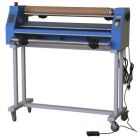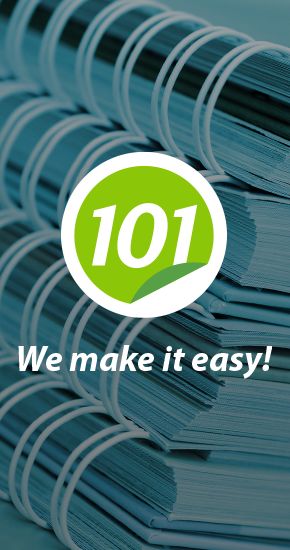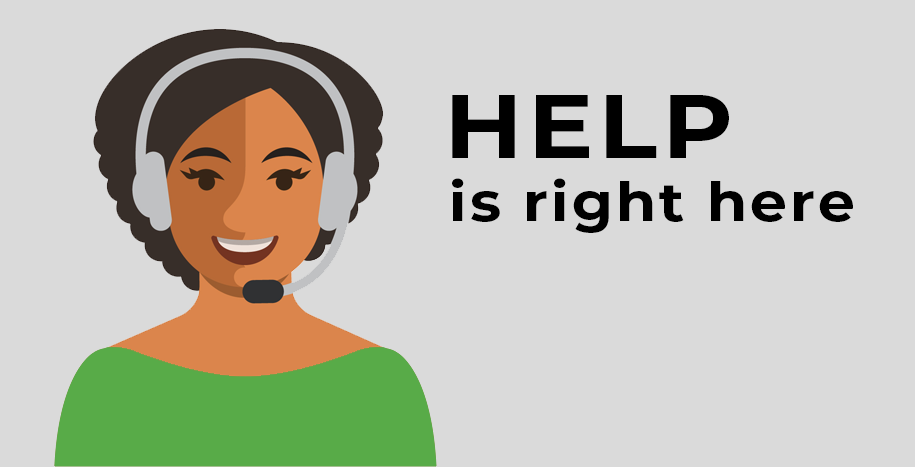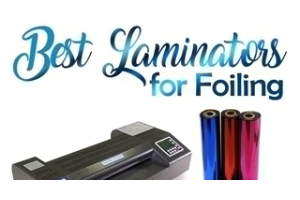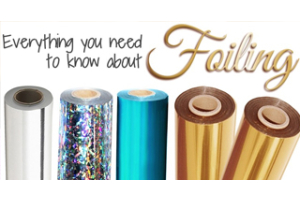All About Roll Laminating
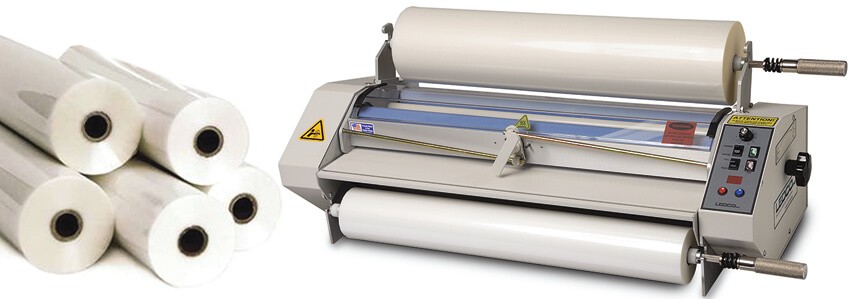
Roll laminating machines are typically designed for higher volume runs and large formats up to 65" wide and 1" thick. For two sided laminate, two rolls of laminating film are used, and for one sided laminate, one roll is used. There is a wide variety of lamination film available in the market; however the most frequently used is thermal laminate film which is activated using heat. Thermal film is constructed of two layers; a polyester layer and an adhesive layer. During the laminating process, the adhesive is warmed and melted. It is then pressed into the document acting as a bonding agent. As the adhesive cools, it hardens and creates a permanent seal between the document and the film.
Roll lamination is a process that involves two laminating rolls, a top and a bottom roll, and is placed on the machine with the glue sides facing each other. As the rolls are "uncoiled" a document is placed between the two pieces of laminate and is sealed as it travels through the rollers and the heat is applied. It is important to leave a small edge around the document to allow the lamination to adhere to itself. Some form of trimming is usually required with roll lamination. This lamination process is generally used for larger volume items as it can run at higher speeds and in a continuous roll.
Roll laminators operate by pulling film with a thermally-activated adhesive over a heat source and into a set of laminating rollers. Film from a roll passes over heat shoes to activate a polyethylene adhesive layer on the film. It then passes through rollers to apply pressure and bond the film with the item being laminated. The film will actually fuse into the item, creating an incredibly protective encapsulation that helps prevent UV damage, bending, tearing, and can easily be wiped clean.
With a maximum laminating width of 27", a Roll Laminator is perfect for laminating posters, maps, book covers, signs, photographs, charts, and much more. When roll laminators are wider, going up to 65" and beyond, they are called wide format roll laminators. Both options allow for high production rates, are durable, and allow your application to be wiped clean. Many roll laminators can also handle mounting documents of several different thicknesses and on a variety of Mounting Boards.
Advantages of Roll Laminating:
- • Allows for high production rates
• Easy to use
• Many models can run all-day
• Laminate wide items
Limitations of Roll Laminating:
- • Some machines require set-up and training
• Large size is not ideal for all locations
• Machine can be expensive for some tight budgets
 About the Author • Hi! My name is Mallory Morsa, and I have been the product expert and content specialist at Binding101 since 2008 (I have practically grown up here!). Every day I push myself to learn new information, incorporating real-life experiences from myself and the entire team to create solutions to the most common problems in the industry, and then present those solutions in a way that is easy to understand for everyone, from novices to experts. I dive deep into products to figure out how they work from the core, and am always honest with my results, so that you know exactly what you will get, before you buy. Outside of work, I can be found snuggling my 3 furbabies, reading by the pool, or at my local animal shelter bottle feeding and volunteering for the kitten nursery.
About the Author • Hi! My name is Mallory Morsa, and I have been the product expert and content specialist at Binding101 since 2008 (I have practically grown up here!). Every day I push myself to learn new information, incorporating real-life experiences from myself and the entire team to create solutions to the most common problems in the industry, and then present those solutions in a way that is easy to understand for everyone, from novices to experts. I dive deep into products to figure out how they work from the core, and am always honest with my results, so that you know exactly what you will get, before you buy. Outside of work, I can be found snuggling my 3 furbabies, reading by the pool, or at my local animal shelter bottle feeding and volunteering for the kitten nursery.





